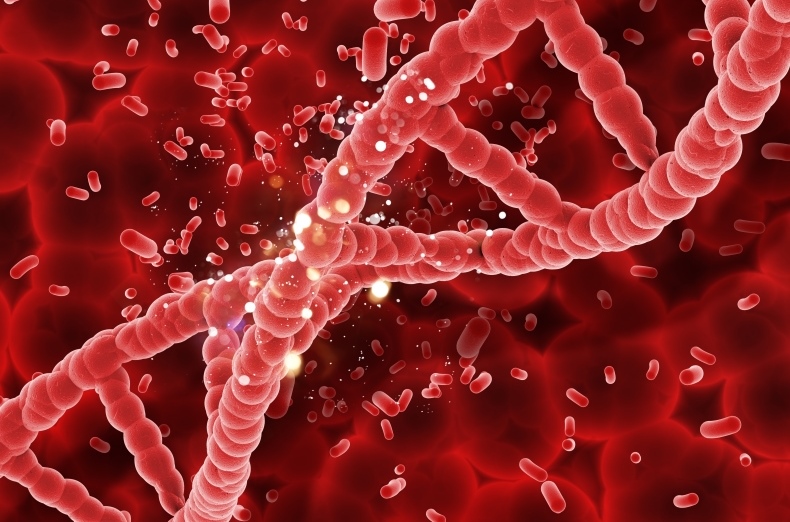
In an exciting new breakthrough, a team of researchers has demonstrated that umbilical cord blood can safely be used to treat a wide range of rare genetic diseases, including Hunter syndrome, sickle cell disease, Thalassemia, and Krabbe disease.
The aim of the study was to determine if a universal cord blood stem cell treatment could be created to treat several rare genetic disorders. The findings of the team’s research indicate that a universal treatment is very likely to work.
Although there are already treatments for rare genetic conditions like Hunter syndrome, sickle cell disease, Thalassemia, and Krabbe disease, they were not always available at all hospitals due to the low incidence of these conditions.
Developing a universal treatment would make it easier for patients to receive the treatment they need, regardless of their location. It would also have the advantage of being more affordable than a specialised treatment.
Researchers have found that umbilical cord blood stem cells are especially useful because they can be obtained so easily. They can be collected from umbilical cords after a child has been born. It is a non-invasive procedure that carries no risk for the mother or child. It only collects material which would have been discarded as medical waste in the past.
The team of researchers, from the UPMC Children’s Hospital of Pittsburgh, discussed the groundbreaking nature of the trial, saying: “no previous studies using stem cells in treatments for metabolic, immune or blood disorders have shown such high levels of safety, efficacy or broad applicability.”
What Did The Trial Involve?
The study involved a group of 44 children with a variety of genetic disorders. Each child received a low dose chemotherapy treatment and immunosuppressant drugs at the start of the trial. This reduced the activity of their immune system and made room for the upcoming stem cell transfusion.
Next, researchers gave each participant a single injection of umbilical cord blood stem cells. The cord blood used in these transfusions had come from the umbilical cord and placenta of healthy babies.
The goal was to have the stem cells “reset” the immune system. This would replace the dysfunctional immune cells that were causing the genetic disease suffered by each study participant.
After a couple of weeks, the participants received a second stem cell transfusion and were assessed.
{{cta(‘924954d5-8fa6-4ba7-85fd-36b883ec14ac’)}}
What Were The Results Of The Trial?
Of the study’s 44 participants, 30 had metabolic disorders like leukodystrophies. Leukodystrophies are a group of rare diseases which gradually affect the spinal cord, brain, and peripheral nerves. It results in abnormal development and eventually, damages the brain. Harmful toxins can also build up in the body.
All of the children with a metabolic disorder had symptoms of neurodevelopmental delay prior to the start of the trial. Within 12 months of receiving a cord blood transplant, all 30 children saw an improvement in their brain function. The progression of their abnormal brain development came to a halt. Several of the children saw dramatic improvements in their brain function and began to learn new skills.
What are genetic disorders?
Genetic disorders are caused by a defect, mutation, or change in a person’s DNA. These types of disorders are caused by gene mutations in a single gene, gene mutations in multiple genes, a combination of gene mutations and environmental factors, or damage to the chromosomes.
Many genetic disorders are inherited, including cystic fibrosis, sickle cell disease, Marfan syndrome, fragile X syndrome, haemophilia, and thalassimia. Other disorders are caused by acquired mutations, often from environmental factors like exposure to cigarette smoke or radiation.
Genetic disorders can be fatal. This is particularly true of degenerative illnesses like leukodystrophies, where the patient’s condition continues to decline over time. In fact, most children with this condition pass away within a few years of their initial diagnosis.
Notably, 90% of the children in the study with leukodystrophy are still alive three years after receiving their transplant. Their survival may be an indication of the treatment’s effectiveness.
The researchers have now confirmed that their new stem cell treatment can be used to treat 20 diseases and they believe that this number will only increase in the years to come.
What Genetic Disorders Can Umbilical Cord Blood Treat?
Umbilical cord blood transplants are already use to treat over 85 medical conditions. This includes a wide variety of cancers, metabolic disorders, blood disorders, and immune system disorders.
Many of these conditions are inherited genetic disorders, like thalassemia, acute myeloid leukaemia (AML), sickle-cell anaemia, Hunter syndrome, Fanconi anaemia, severe combined immunodeficiency, and Krabbe disease.
In most cases, a child with a genetic disease would require a cord blood sample from a sibling or matching donor. This is where cord blood banking comes in very handy, as parents can use a child’s stored umbilical cord blood to treat a sibling.
Sources
University of Pittsburgh, (2020) “Umbilical cord blood successfully treats rare genetic disorders in largest study to date”, available at:
https://medicalxpress.com/news/2020-07-umbilical-cord-blood-successfully-rare.html
Reiter et al., (2020) “Cord Blood Preservation – Frequently Asked Questions”, available at:
https://www.rhjn-obgyn.com/wp-content/uploads/2015/07/Cord-Blood-Information.pdf
UCSF, (2020) “Inherited Genetic Diseases: Stem Cell Treatments”, available at:
https://fetus.ucsf.edu/stem-cells
Emily Henderson, (2020) “Umbilical cord blood safely and effectively treats children with rare genetic disorders”, available at:
https://www.news-medical.net/news/20200714/Umbilical-cord-blood-safely-and-effectively-treats-children-with-rare-genetic-disorders.aspx
{{cta(‘a30cec0a-5bde-4167-9d35-9d42b560ca18’)}}


